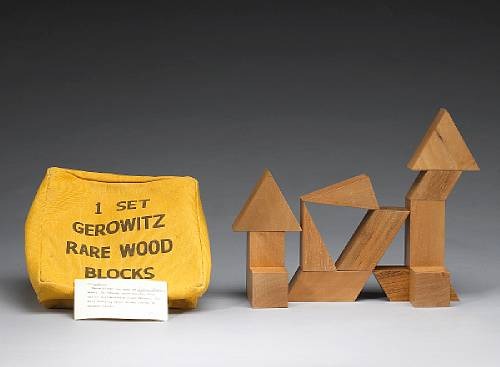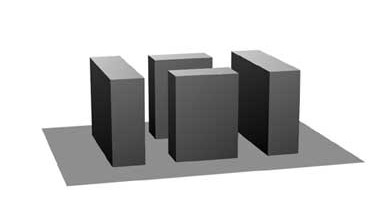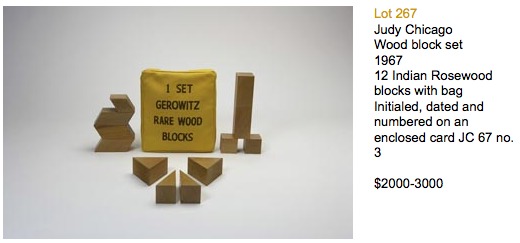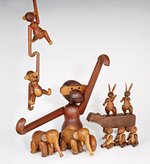
Before the 70's when she got all into vaginas and became famous as a pioneer of Feminist Art--and before she changed her name to Judy Chicago to free herself from the male subjugation of women who were named after their fathers and husbands, Judy Cohen Gerowitz was making important minimalist sculpture in Los Angeles and organizing highly influential art world protests against the Vietnam War.

Chicago's work stood out in Ann Goldstein's awesome 2004 exhibition at MoCA, "A Minimal Future? Art As Object 1958-1968," which looked back at Minimalism in the context of concurrent movements of Abstraction, Pop, and Conceptual Art. In the catalogue essay on Chicago, Susan Jenkins suggested that the circular shape, small scale, and visual preciousness of Gerowitz's 1968 Domes "prefigure" the work in the "purely feminist idiom" to come. And that the three domes are "related to the central core imagery for which Chicago has become well known," which is a triangle, which is a vagina, hello.
But if we're looking for traces of Chicago's Feminist breakthroughs in Gerowitz's minimalist works, then I suggest pushing back to at least 1967, when these blocks were made. Except for auction listings, I can't find any references to this edition, 1 Set Gerowitz Rare Wood Blocks, and I can't pinpoint any exhibitions at which they were ever shown.
Gerowitz Rare Wood Blocks consists of a dozen building blocks of Indian rosewood in a silkscreened canvas bag. The triangles are there, front and center. A little card is signed "JC 67 No. 3," which means there could be more, but it also makes me wonder. Gerowitz only legally changed her name to Chicago in 1970, and was showing as Gerowitz. Or maybe Cohen Gerowitz. Is JC Judy Cohen, or an early instantiation of Judy Chicago? Or--not to get all Encyclopedia Brown about it--was that card signed sometime after JCG/JG became JC? Whatever the explanation, it would seem to imply more continuity between Gerowitz's and Chicago's art.

By reducing minimalist sculpture to the scale of a child's plaything, the blocks also seem like a damning proto-feminist critique of Minimalism as a male dominated, "boys & their toys" clique, which feels especially prescient for 1967. The blocks also resonate nicely with the little, build-it-yourself matte board model Tony Smith published that same year for The Maze, a looming, room-sized installation at Finch College [above]. Ubu.com has reproduced Smith's Maze model as part of its awesome digital archive of Aspen Magazine.

Chicago left the Minimalist rat race in part because of "lack of support" by the art world for her work. [It's worth noting that another early female minimalist, Anne Truitt, had an equally rough art market road, but she stuck it out while raising three kids alone.] Unfortunately, for all her intervening fame, the auction prices for Chicago's unknown blocks continue to be oppressed by The Man. Bonham's couldn't sell them last November with an estimate of $6,000-8,000, and now they're back at auction at LA Modern, with a much lower estimate, $2,000-3,000. On the bright side, LAMA has arranged them in the shape of a penis, so I'm sure they'll do just fine.
Lot 267, June 7, 2009: Judy Chicago, Wood Block Set,1967, est. $2-3,000 [lamodern.com]




